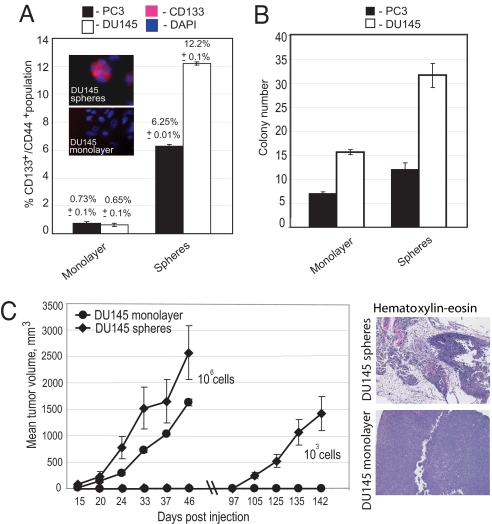Fig. 1.
Enrichment of the prostate CSC-like population under sphere-forming conditions. (A) Flow cytometry analysis showed significant enrichment of the CD133+/CD44+ population under sphere-forming conditions compared with monolayer conditions for DU145 and PC3 cells (P < 0.001). Insets show representative immunocytochemical staining for CD133 in DU145 spheres and monolayer cells. (B) Spheres have higher colony formation ability as compared with cells grown under monolayer conditions. The cells were plated on 0.2% agarose with serum-free EBM supplemented with B27, insulin, FGF, and EGF (see Materials and Methods). The colonies were calculated relative to 1,000 cells after 3 weeks of plating. (C) Tumors were produced more efficiently by the cells grown under sphere-forming conditions as compared with the cells grown under monolayer conditions. A total of 106 or 103 cells embedded in a collagen matrix were injected s.c. into NOD/SCID mice. H&E staining showed that tumors originating from the cells grown under monolayer conditions are composed of uniform cells, whereas tumors obtained from cells grown under sphere-forming conditions are highly heterogeneous.

